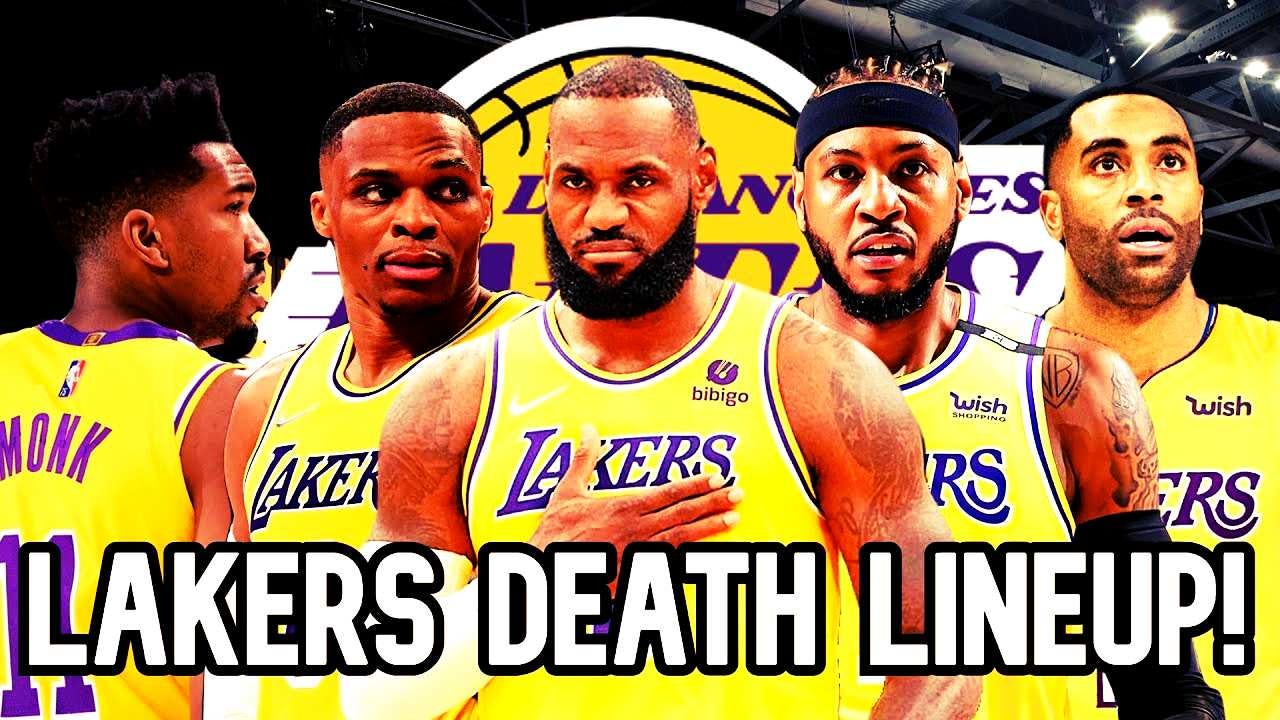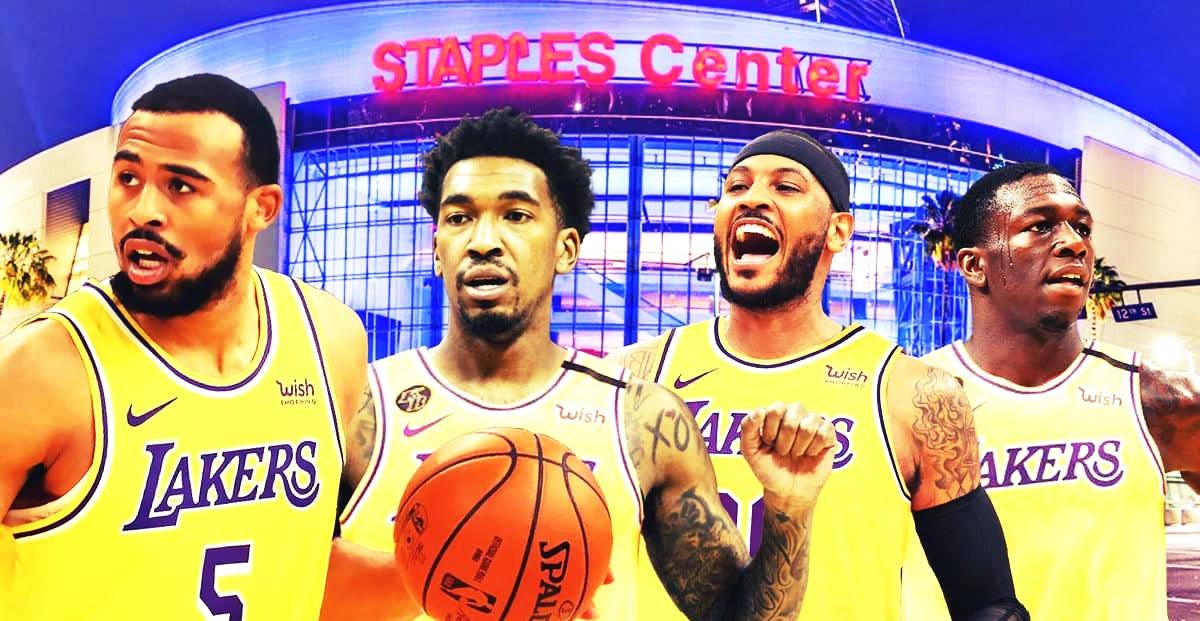The Los Angeles Lakers have a serious problem. The immediate help they need to stop the bleeding in the form of injured players returning or a big trade to give the team more size in the front court aren’t happening soon.
The Lakers problem is their key injured players — Ariza and Nunn — aren’t likely to return until mid-December and their top trading chips — THT and Nunn —cannot be traded until December 15 and January 15 respectively. That means Lakers’ head coach Frank Vogel will have to find a way to survive with the existing roster for at least the 9 games before December 15 and possibly for the 22 games on the Lakers’ schedule before January 15.
While the Lakers aren’t in serious trouble yet, the warning signs are ramping up and unless Frank Vogel makes some major changes, the 10–11 Lakers could easily find themselves 15–15 on December 15 or 22–21 on January 15. Vogel is no novice in the coaching business and should know that having a record close to .500 on December 15 or January 15 could easily cost him his job as head coach of the Los Angeles Lakers. Frank is now on hot seat.
At the heart of the Lakers’ problems is Vogel’s starting lineup that included DeAndre Jordan and Avery Bradley as the two role player starters alongside the three superstars LeBron James, Anthony Davis, and Russell Westbrook. While DeAndre Jordan and Avery Bradley clearly fit what Frank Vogel wants as his starting rim protector and point-of-attack defender, both players have not met expectations and have the team’s two lowest net ratings.
How the Lakers fare over the 9 games before December 15 and the 22 games before January 15 will determine Vogel’s fate. So let’s look at what Frank can do to shake up the rotation, win some games, and save his job.
1. Remove Jordan and Bradley from the Starting Lineup

If the Frank Vogel’s going to survive the 9 games until December 15 or the 22 games before January 15th, he’s going to have to replace DeAndre Jordan as the starting center and Avery Bradley as the starting shooting guard.
Vogel’s overreaction to the Lakers’ small ball lineups getting killed on the boards and outscored in the paint was to revert back to DeAndre Jordan starting again at center, despite his negative impact on the team’s spacing. Frank paired the Jordan move with Avery Bradley returning to the starting lineup the last two games. Vogel’s justification for making both moves was to increase the size and improve the defense of the starting lineup.
The results of the two games confirm Vogel did get better defense as Jordan’s 101.5 and Bradley’s 102.4 defensive ratings were best on team. Unfortunately, their 85.1 and 91.3 offensive ratings were worst on the team. While starting Jordan and Bradley created better defense, they stifled the team’s offense. Jordan’s -16.4 net rating was lowest and Bradley’s -11.2 third lowest on the team. Vogel needs to admit his mistake and replace both.
It’s one thing for a coach to want an elite defensive team and to demand players play defense if they want to start but Vogel needs to realize this team strategically sacrificed some defense to get much better on offense.
2. Get Creative with Non-Traditional Starting Lineup

Pelinka’s moves combined with untimely injuries have derailed any roster stability the Lakers had hoped for. The best Frank Vogel can hope for now is to replace Jordan and Bradley with starters who can help the team win.
The above small ball lineup with LeBron James at the five and Carmelo Anthony at the four with three guards is a perfect example of the innovative starting lineups Frank Vogel needs to embrace to get the Lakers rolling. Substitute Anthony Davis for Carmelo Anthony and Frank has his starting lineup: Westbrook, Ellington, Monk, James and Davis. Or Davis and James if you want LeBron to play the five. Either way, Melo comes off the bench.
This is not the 2020 bubble championship roster but it has definite strengths that Vogel can rely upon when retooling his starting lineup and rotations. the roster also has its Achilles Heel in that it lacks small forward sized players. Fortunately, the Lakers do have three healthy quality bigs in LeBron James (36 mpg), Anthony Davis (36 mpg), and Dwight Howard (24 mpg) who could cover the 96 minutes of time at power forward and center each game.
After Friday night’s triple overtime loss to the Kings, Vogel will be under intense pressure from the media and fans to remove both Jordan and Bradley from the starting lineups. The Lakers are a team in need of change.
3. Narrow Rotation to Ten Players Maximum

Besides setting his starting lineup going forward, Lakers head coach Frank Vogel needs to narrow his rotation to ten players by setting up the starter and primary backup for each position. The Lakers need rotational stability.
Here’s the Lakers’ projected depth chart:
PG: WESTBROOK, NUNN, Rondo
SG: ELLINGTON, REAVES, Bradley
SF: MONK, THT, Bazemore
PF: DAVIS, ANTHONY, Ariza
CE: JAMES, HOWARD, Jordan
Starters and primary backups in caps
The problem with Rob Pelinka’s construction of the Lakers’ roster is the obvious lack of size at small forward. While we keep hearing that 6′ 8″ Trevor Ariza is the solution, he has only played power forward the last four years. Frank Vogel needs to realize two bigs is not the answer to the Lakers’ lack of size at the three. That’s a problem the Lakers will have to wait to solve until January 15 when THT and Nunn will both be eligible to be traded.
Meanwhile, Vogel needs to find starting and rotation lineups that can score, defend, and win games with LeBron, AD, and three guards. That’s what his future as the head coach of the Los Angeles Lakers will depend upon.





